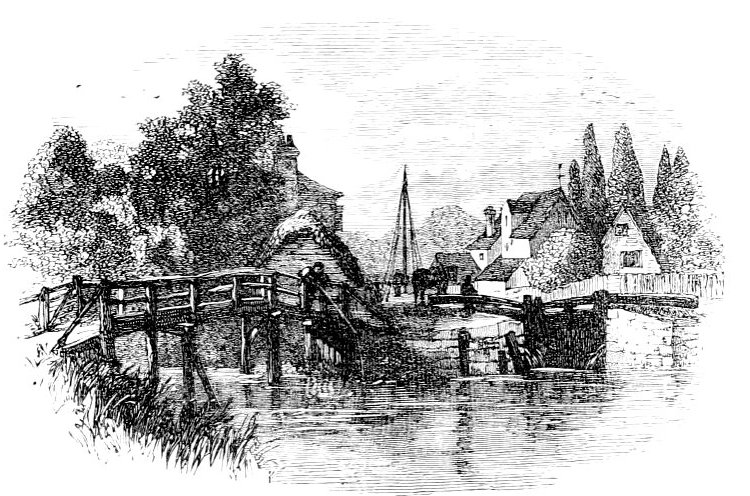
Osney Lock. Artist: E. W. Cooke. 1859. From The Book of the Thames from its Rise to its Fall, p. 83. [Click on image to enlarge it.] Text and formatting by George P. Landow. [You may use this image without prior permission for any scholarly or educational purpose as long as you (1) credit the University of Pittsburgh and the Internet Archive and (2) link your document to this URL in a web document or cite the Victorian Web in a print one.]
Commentary by the Halls
Shortly before Oxford is reached, at a point called the Four Streams, the river separates into two channels, its "divided flood" meeting again just below the city, at the foot of Folly Bridge, at the commencement of Christ Church meadow. Our course takes us by the right-hand stream, the only navigable one, under a bridge on the highroad leading from Oxford to the wes t— a road which numbers seven bridges within a mile, and illustrates somewhat expensively the divided character of the Thames at this part of its course.
A cluster of old houses points out the site of Osney; we first pass, however, through Osney Lock, one of the most picturesque locks on the river; although its accessories are only low houses and broken walls, they are such as the painter love. [83]
Text and formatting by George P. Landow. [You may use this image without prior permission for any scholarly or educational purpose as long as you (1) credit the University of Pittsburgh and the Internet Archive and (2) link your document to this URL in a web document or cite the Victorian Web in a print one.]
Bibliography
Hall, Mr. and Mrs. S. C. The Book of the Thames from its Rise to its Fall. London: Arthur Hall, Virtue, and Cp., 1959. Internet Archive version of a copy in the William and Mary Darlington Memorial Libray, the University of Pittsburgh. Web. 10 March 2012.
Last modified 10 March 2012